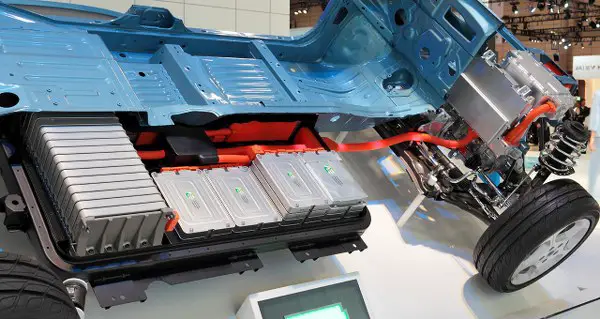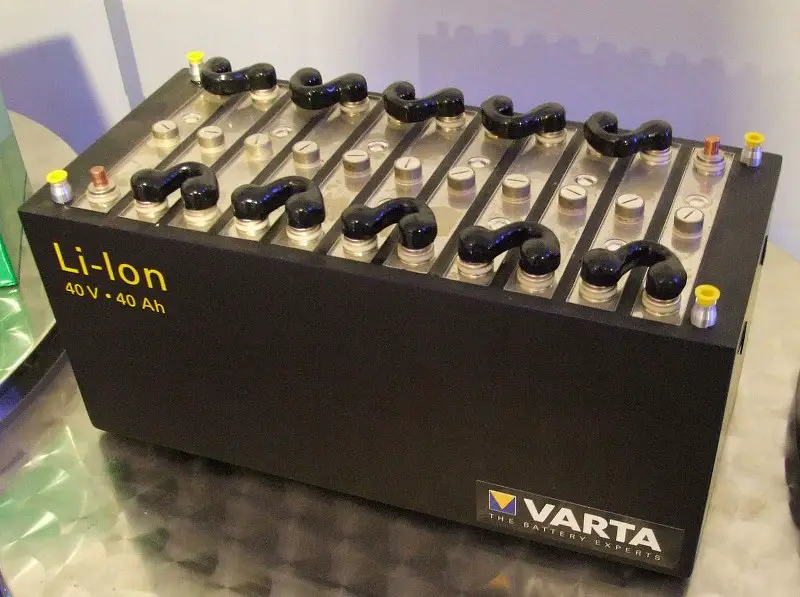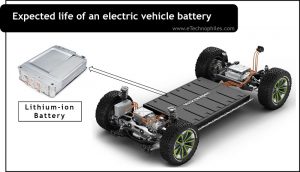3Most electric vehicle owners have one common question: “How long will my battery last?” Lithium-ion batteries have a long life if used correctly. According to manufacturers, they have a useful life of at least 5 years or 2,000 charge cycles. However, they could last up to 3,000 cycles if used with care and kept in the right environment. It is expected that the life span of the batteries will last up to 10 to 20 years before they need to be replaced.
- Why does an EV battery run out of capacity?
- How can you prolong the life of an electric vehicle battery?
- What would be the replacement cost of an EV battery?
- Best 3 electric vehicles based on battery performance
- Steps taken by manufacturers to improve the battery capacity
- Conclusion – What is the expected life of an electric vehicle battery?
Why does an EV battery run out of capacity?

The battery capacity often decreases over time. Multiple factors degrade the battery life. Here, we’ll discuss the five essential factors:
- Age / Hours of use
- Charge & Discharge cycle
- Temperature
- Depth of Discharge
- Thermal Management System
Now let’s discuss these factors in detail:
The most common cause of battery degradation is battery usage. Generally, a 1% to 2% loss of battery capacity per year takes place due to the frequent use of EVs.
Another important factor is the charge and discharge cycle. As the battery is charged and discharged, its capacity decreases.
High temperature affects the performance of EVs. Hence, the Battery Management System (BMS) stops charging the battery entirely for safety reasons if temperatures rise beyond 35 °C. They adjust the charging rate in response to the battery’s internal temperature. The charging rate begins to decline at increasing temperatures.
Read also: A Complete Guide to EV Battery (Size, Weight, Power & more)
The next important factor is the Depth of Discharge. The “depth of discharge” of the battery refers to the percentage of its available capacity used during a cycle. For example, a battery discharged from 100% to 0% will degrade worse than a battery discharged from 80% to 20%.
According to certain theories, high charging rates can shorten battery life.
Another important factor is the battery’s thermal management system (TMS). For higher charge rates the TMS plays an important role. For example, Tesla’s battery has active liquid heat management, which keeps the battery healthy longer. Tesla has a very large battery and can easily exceed 200 miles of usable range.
The example of a Chevy bolt (released in 2017) gives us an overview of the capacity loss of the battery. It lost about 8% of its original capacity in 3 years and running 100,000 miles.
How can you prolong the life of an electric vehicle battery?

Electric vehicles (EVs) come with battery management systems that aid in extending battery life. But, here are a couple of steps you can follow to extend the battery life of your electric car.
Avoid full charging if possible
One of the worst things you can do to a lithium battery is to charge it to its full capacity, even though it gives the most benefit for that single charge. An additional benefit of not charging completely is that remaining amount of battery can be charged through regenerative braking.
Protect the battery pack from over-discharging
Li-ion battery packs prefer partial cycles instead of deep discharge. Lithium-ion chemistry has no memory effect, so it is safe to use partial discharge.
Plan ahead for a longer period of storage
For long-term storage, lithium batteries are typically kept at a medium voltage. Certain EVs like the the Tesla Roadster has a “storage mode” that prevents battery degradation. This mode holds the state of charge at about 40% and also maintains the battery temperature.
Minimize the consumption of DC fast charging
Avoiding DC fast charging is the best way to extend battery life. Fast charging is convenient, but it can seriously damage your battery. For that, we recommend using a slower (AC) charger more often. Frequent fast charging consumes about 1% of battery capacity per year.
For example, if you do not use a fast charger for an electric vehicle, you can use 80% of its capacity after 10 years of regular use. If fast charging replaces conventional refueling, capacity will drop to 70% within 10 years.
What would be the replacement cost of an EV battery?
You don’t have to worry about modifying your EV battery because several manufacturers give warranties of up to 8 years or 100,000 miles. But, if you have utilised the healthy life your car’s battery, and looking for a replacement check the cost of popular EVs below:
- Tata Nexon battery would cost between Rs. 18,000 and Rs. 22,000 for 1 kWh. However, pricing may vary at different locations.
- The price to replace the 31 kWh lithium-ion battery pack in a Tata Nexon EV ranges from Rs. 5.50 lakh to Rs. 6.20 lakh.
- Replacement costs for the 44.5 kWh 394 V lithium-ion battery pack for the MG ZS EV ranges from Rs. 6.60 to Rs. 8.50 lakhs.
Read more: How Much Does it Cost to Replace an EV battery? (Tesla, MG)
Best 3 electric vehicles based on battery performance
Lithium-ion battery capacity is measured in kWh (kilowatt hours). The normal capacity of the battery is around 40 kWh, but some new cars can hold up to 200 kWh. A car’s range is directly related to its battery size. The higher the kWh value, the more distance you can travel on a single charge. This allows us to rank the best electric vehicles in the market today based on battery performance.
Tesla Roadster
The New Tesla Roadster comes with a 200 kWh battery and gives a range of 1000 km on a single charge.
| Battery Capacity | 200 kWh |
| Range | 1000 km |
| Price | $200,000 |
Rimac Nevara
The Rimac Nevara has 120 kWh of battery capacity and gives a driving range of 547 km.
| Battery Capacity | 120 kWh |
| Range | 547 km |
| Price | $ 2.1 million |
Lotus Evija
The Lotus Evija comes with 70 kWh battery capacity gives 400 km on a single charge.
| Battery Capacity | 70 kWh |
| Range | 400 km |
| Price | $ 2.1 million |
Steps taken by manufacturers to improve the battery capacity
Manufacturers are making sure that EV batteries have extra reserve capacity to compensate for degradation over time to extend their lifespan. As such, the additional storage space is used up as the electric vehicle ages. This allows the vehicle’s range to remain constant over the life of the battery.
If the battery capacity drops below 80% of its original level, you may notice reduced battery range and performance.
Conclusion – What is the expected life of an electric vehicle battery?
All electric vehicles have a minimum 8-year or 100,000-mile battery warranty. Batteries often age insidiously, losing only a few percent of their capacity every few years. But with certain precautions, one could keep EV batteries from draining out too quickly. The bottom line is that lithium-ion batteries are getting better and more robust over time. Hence the battery life and longevity will improve as new technologies emerge.

